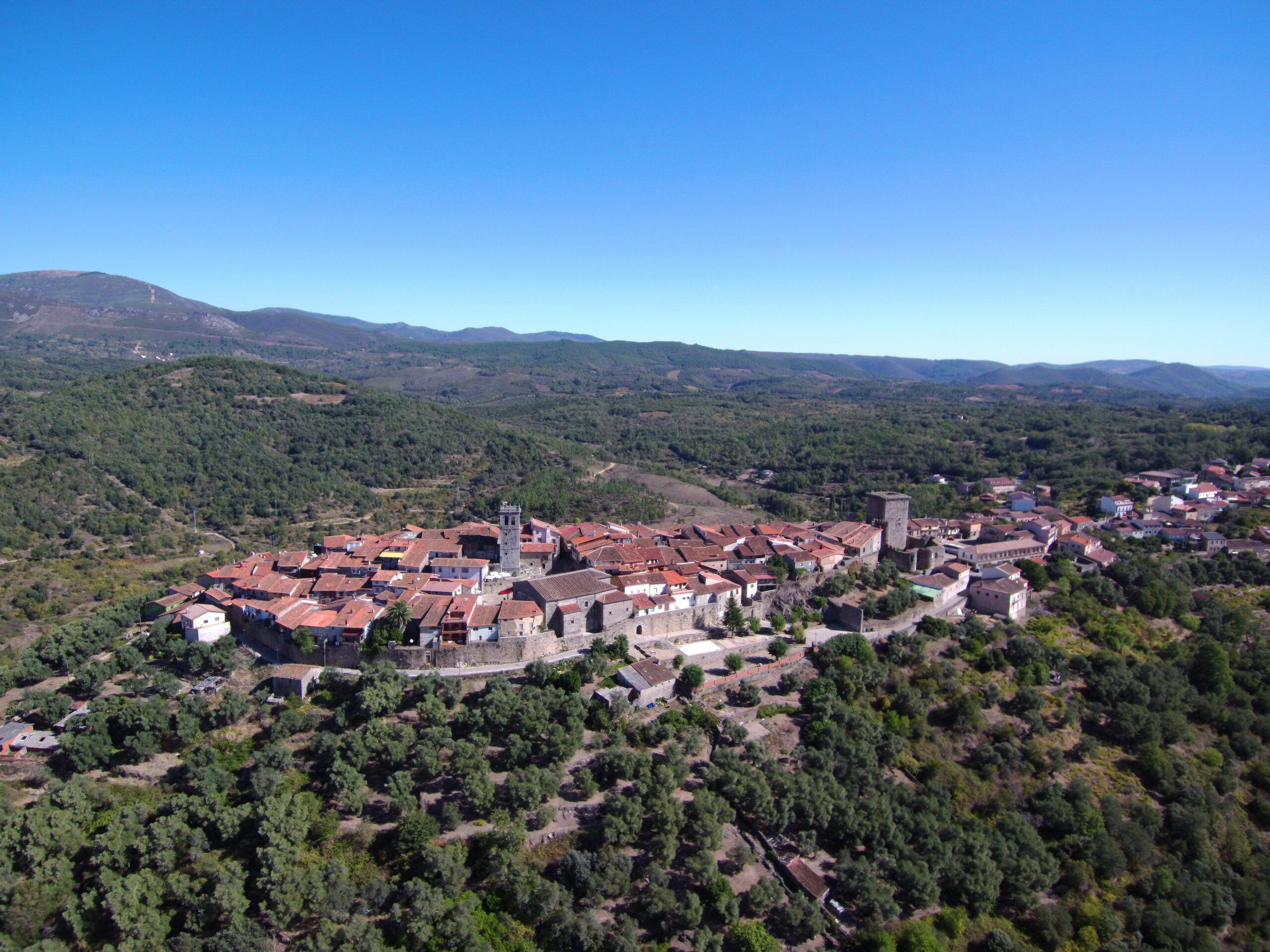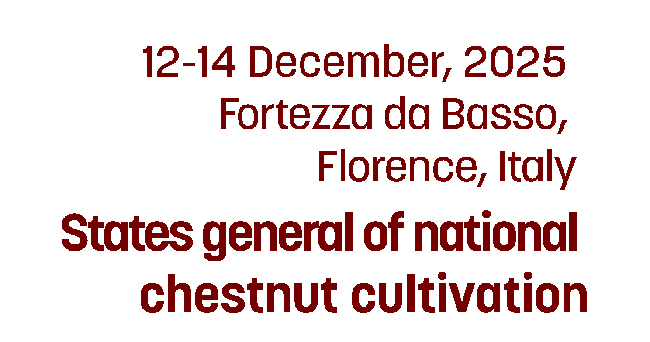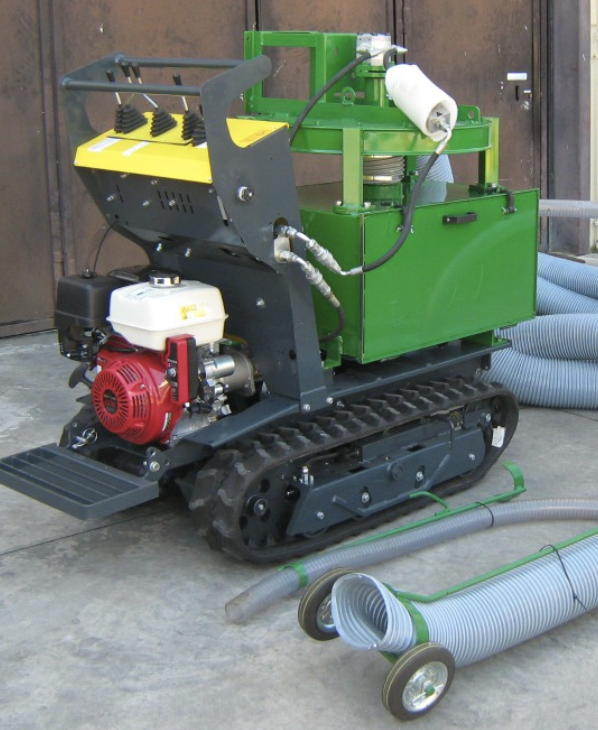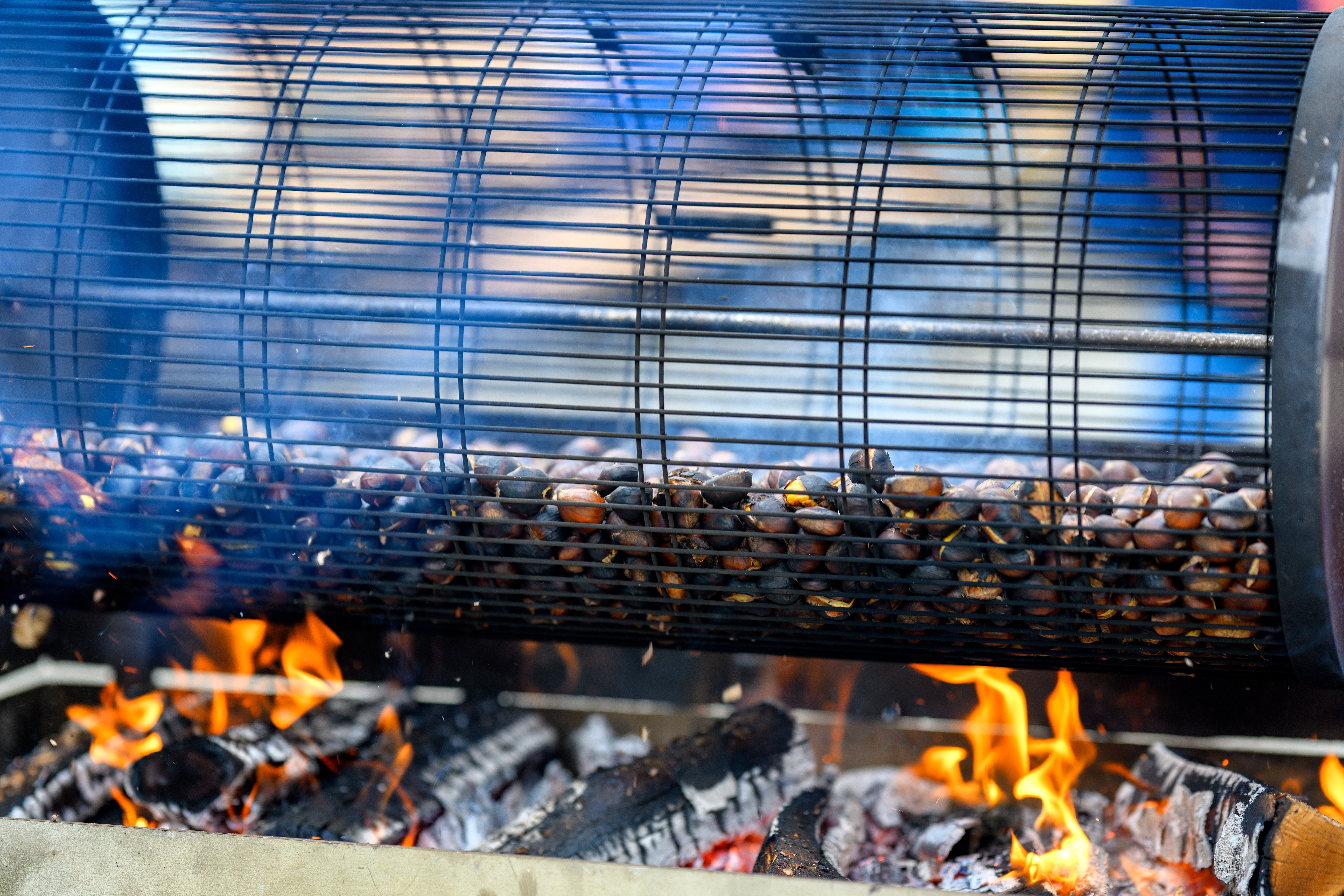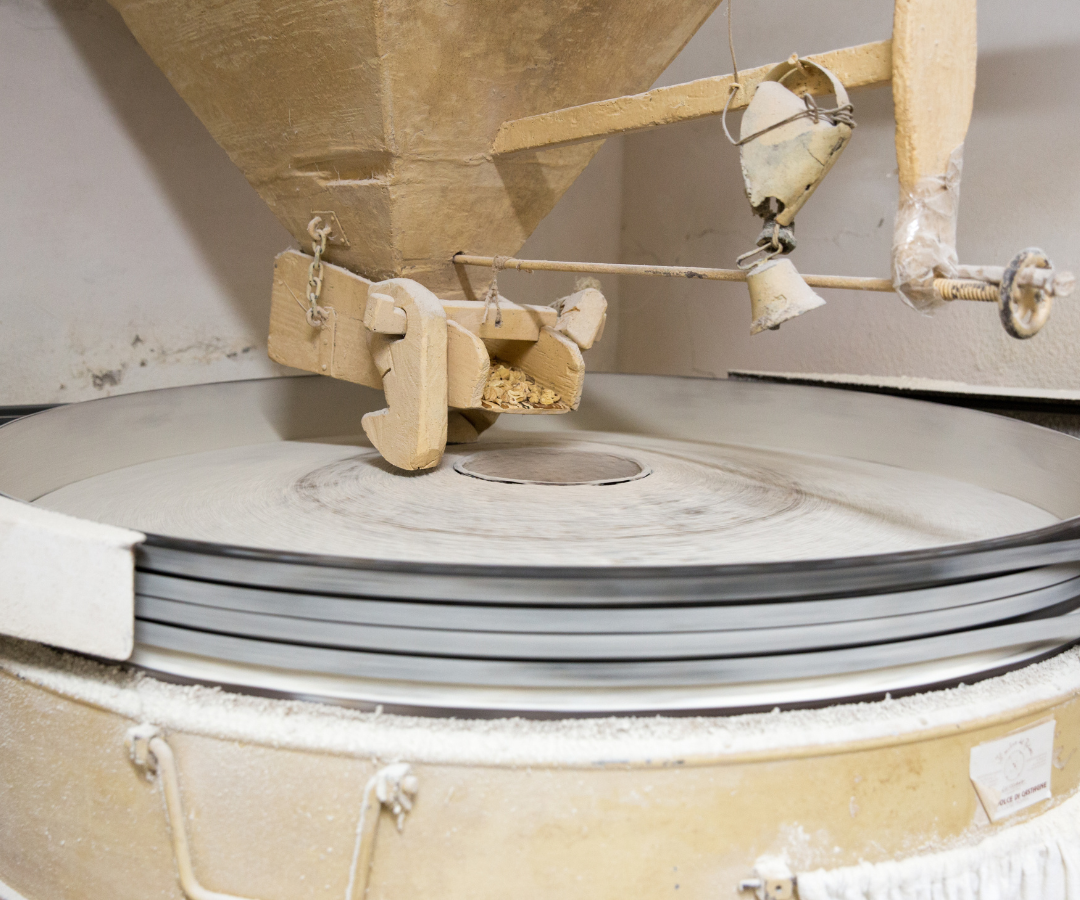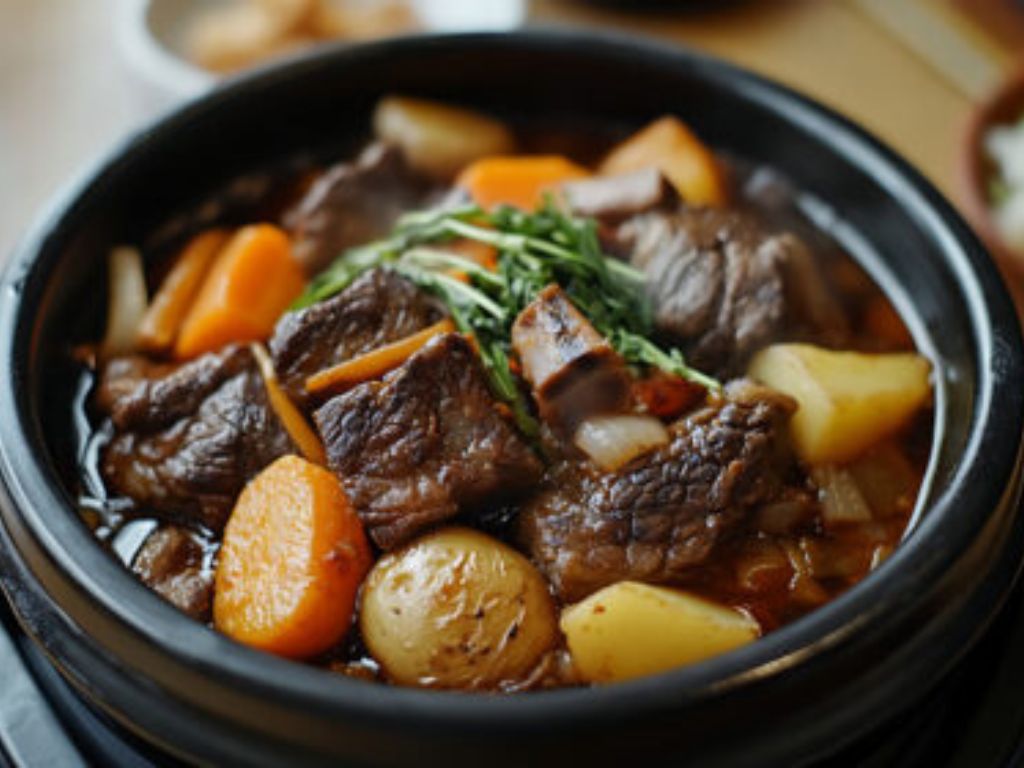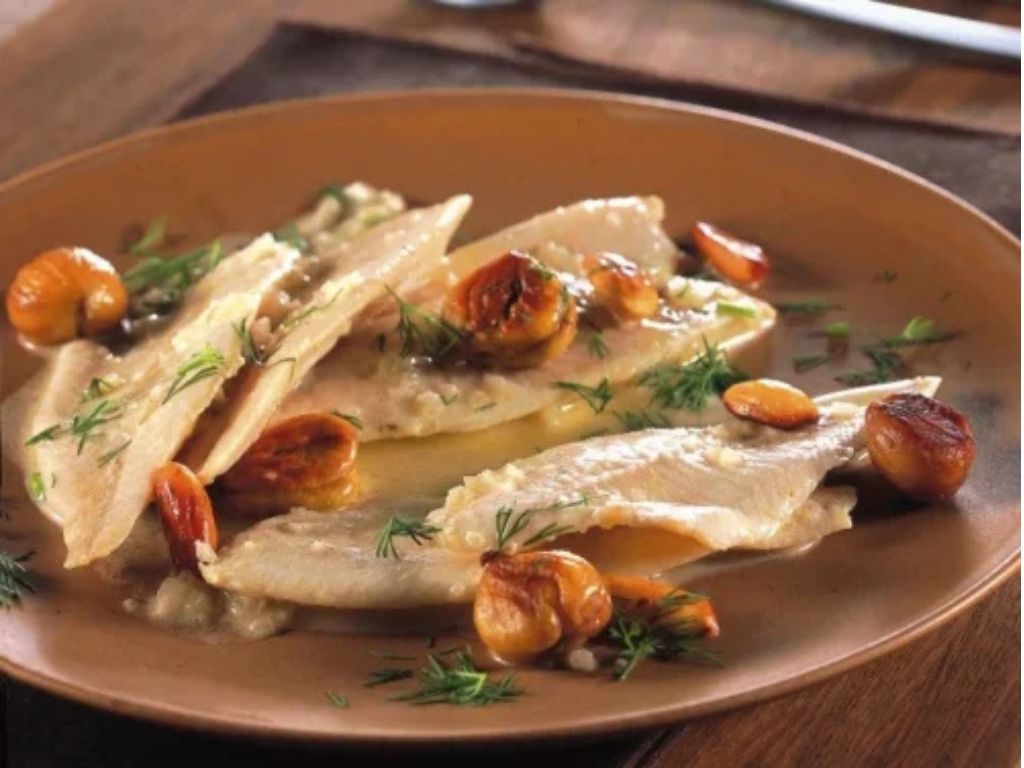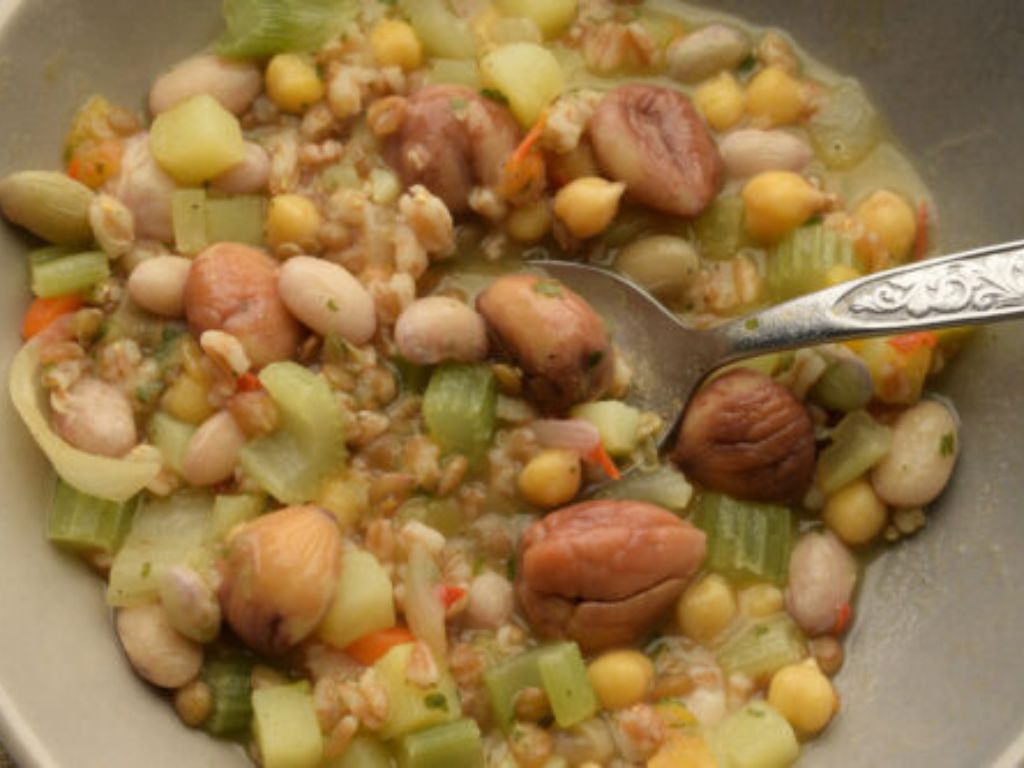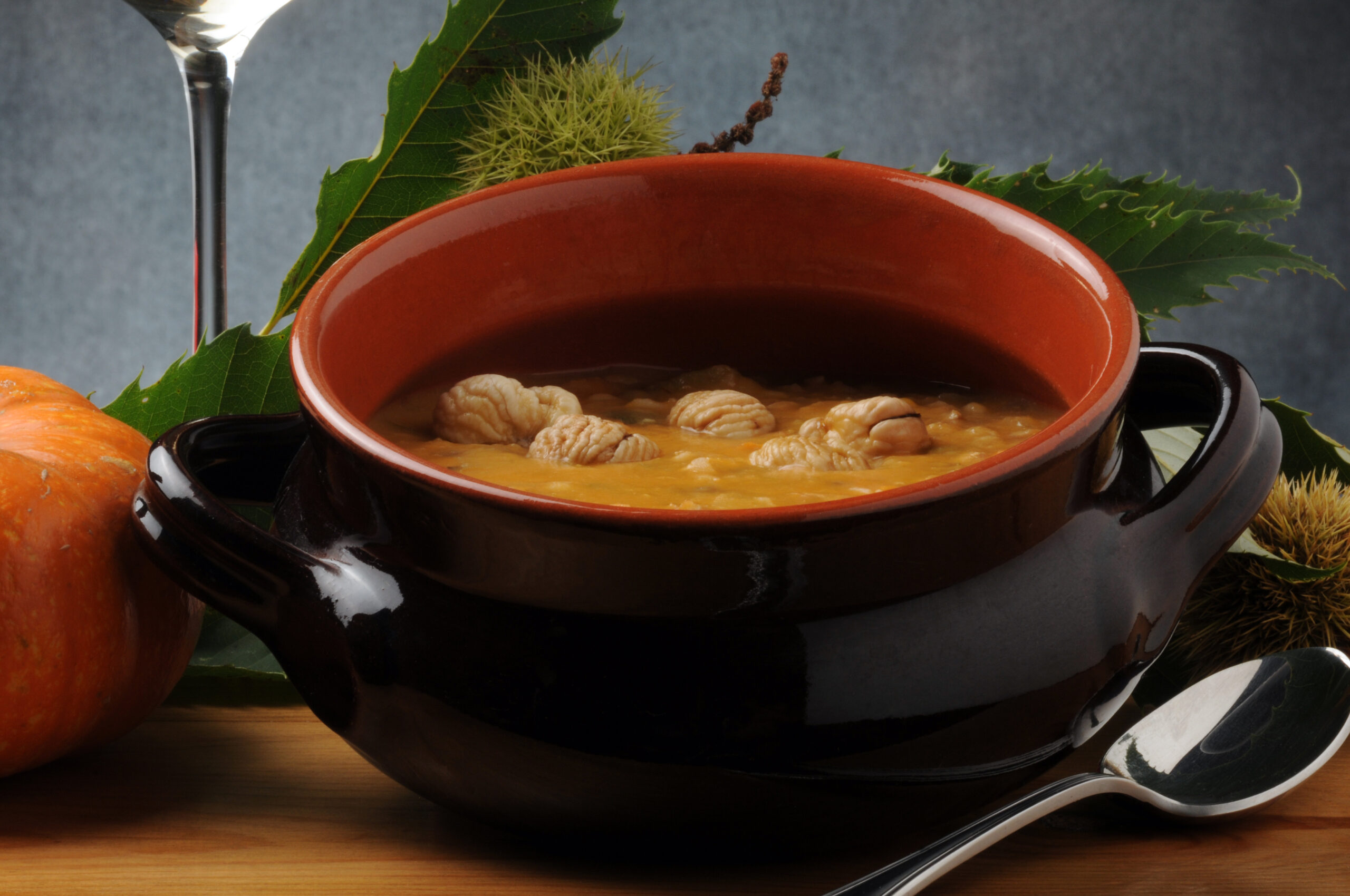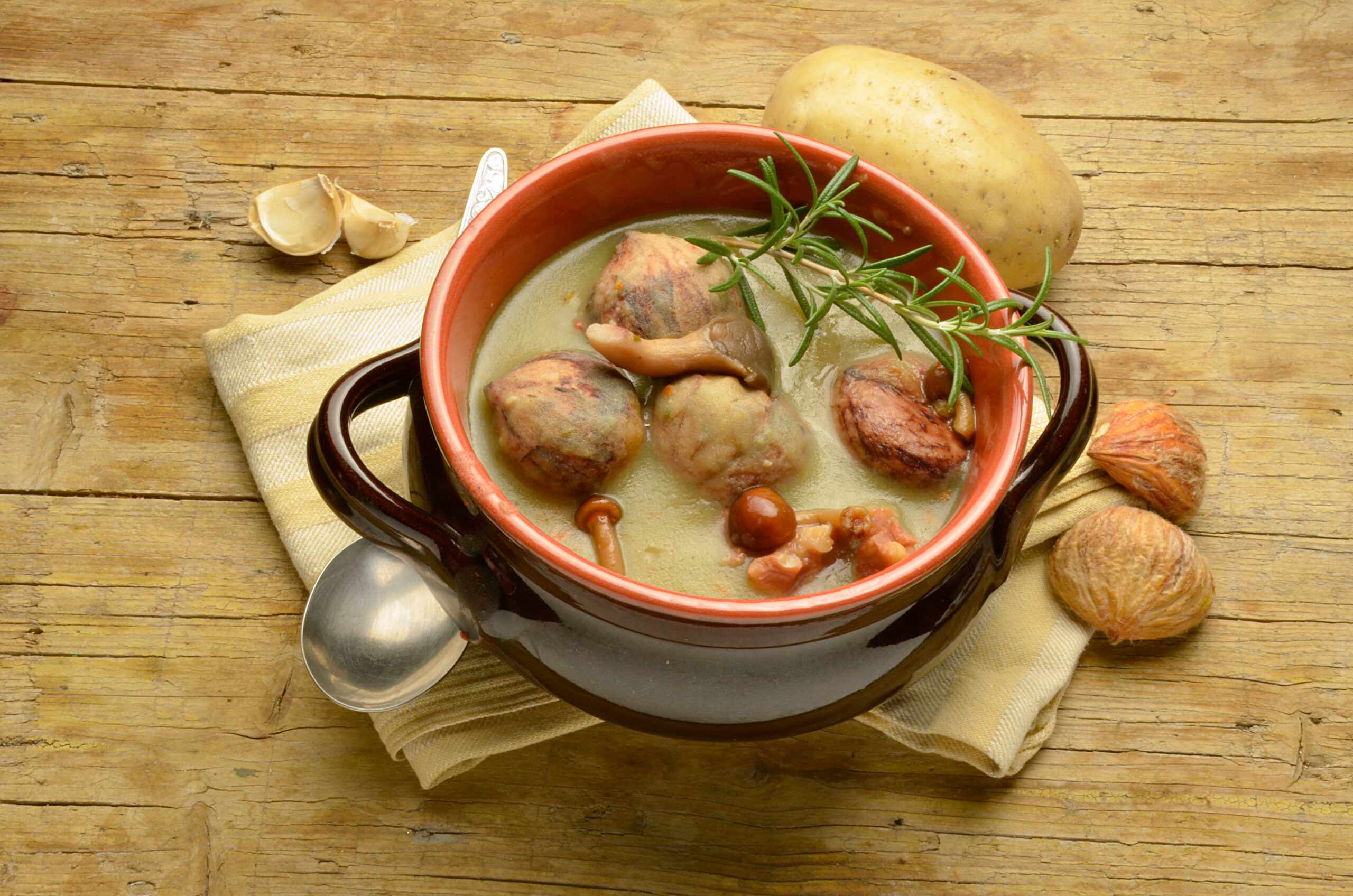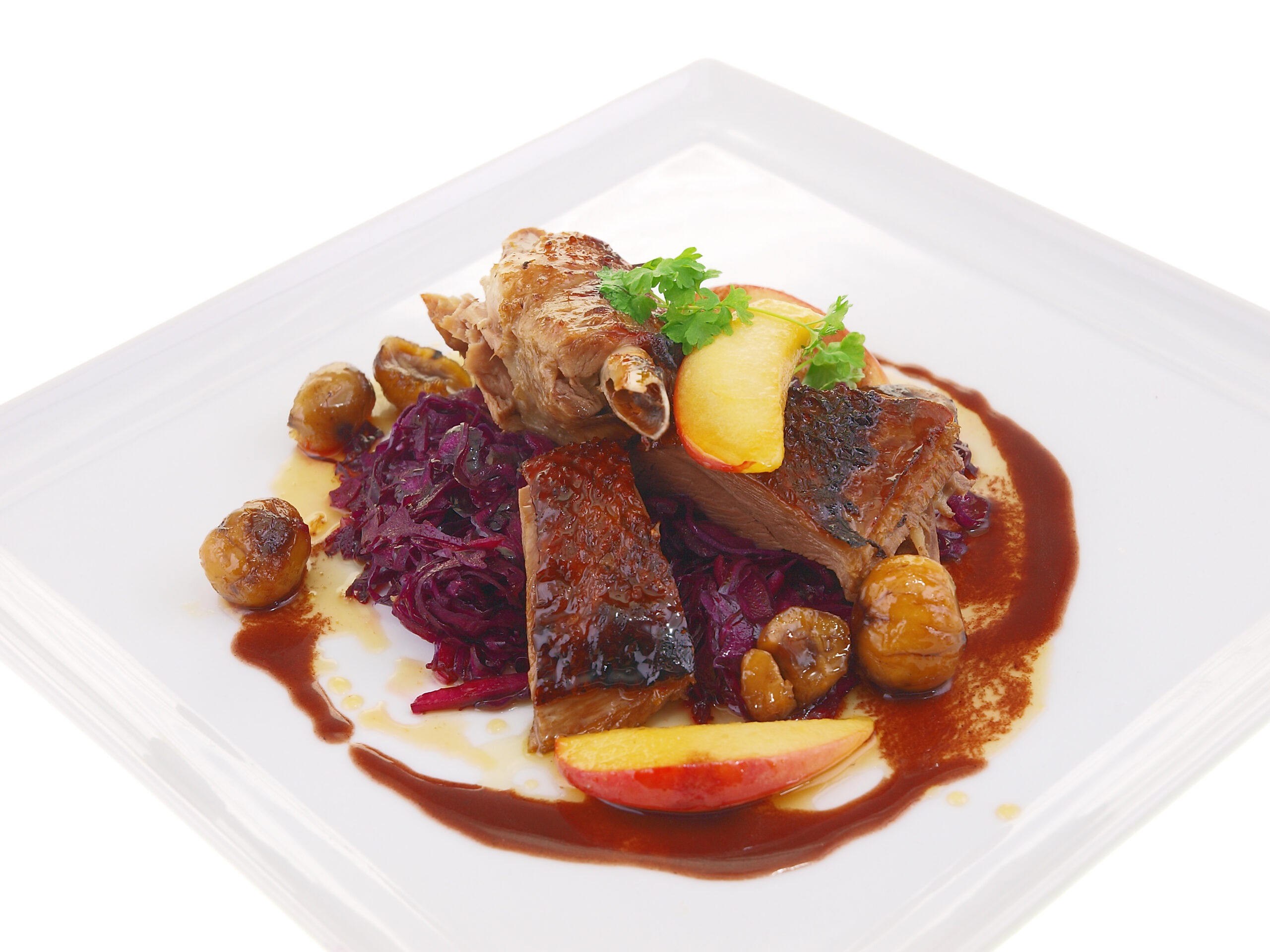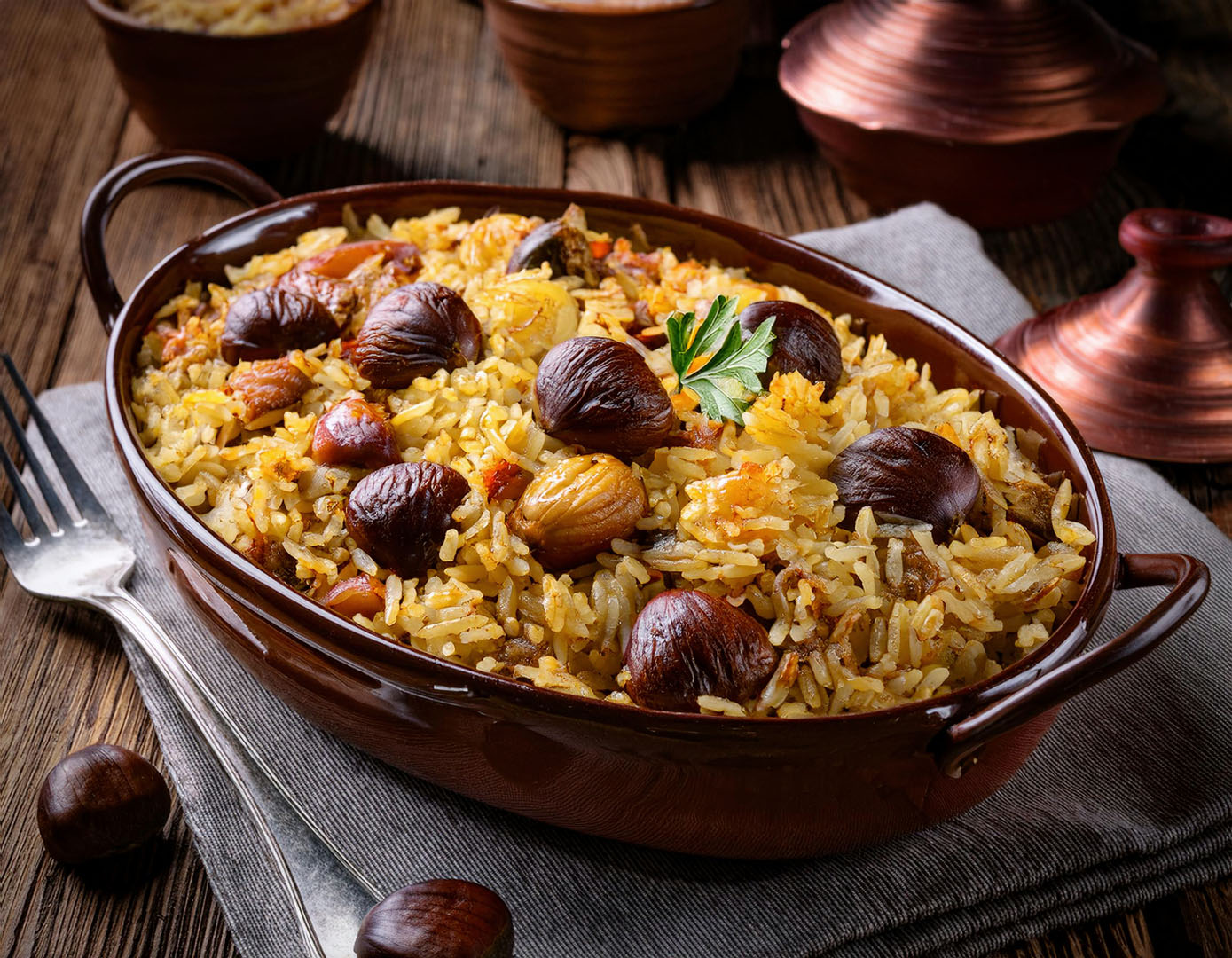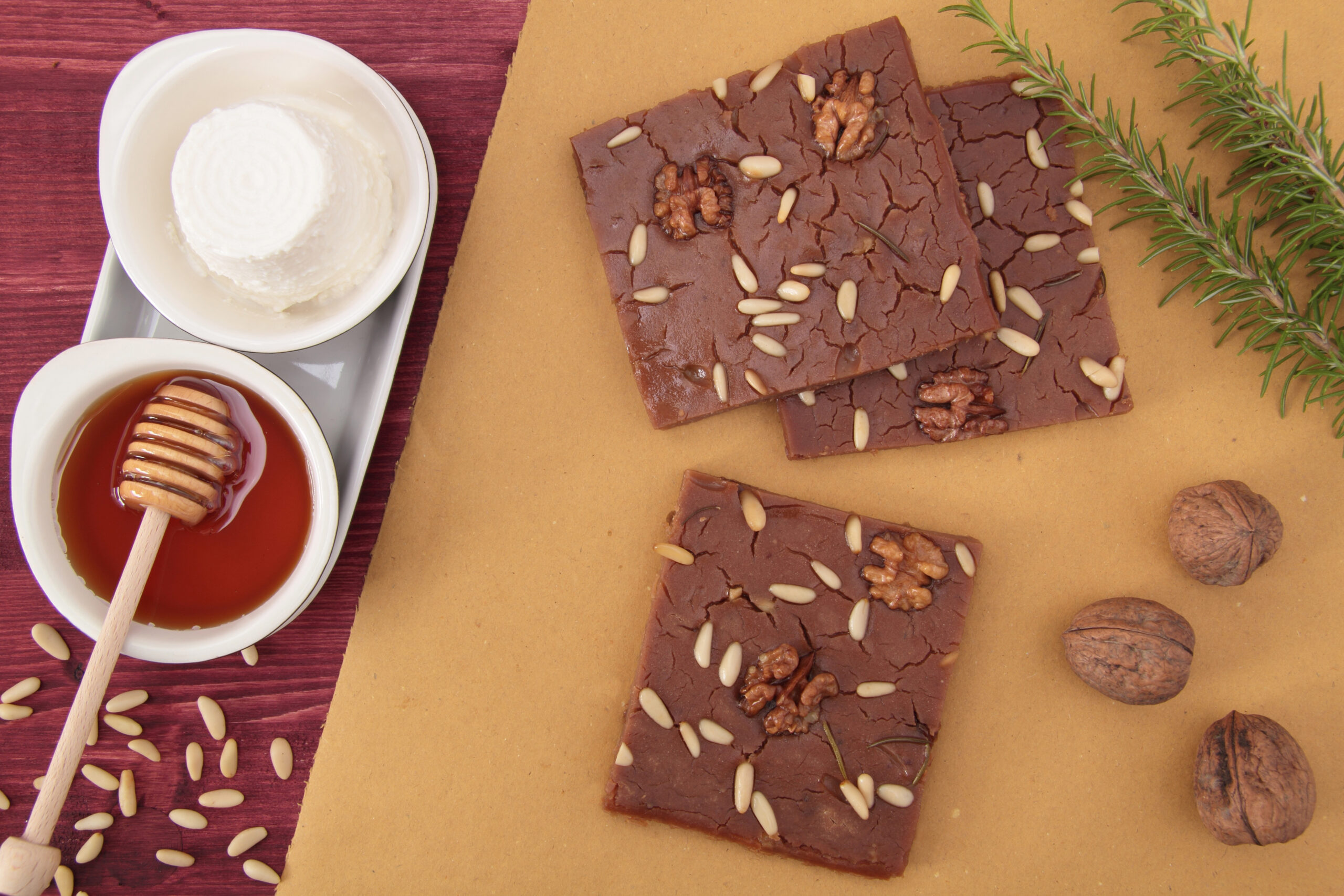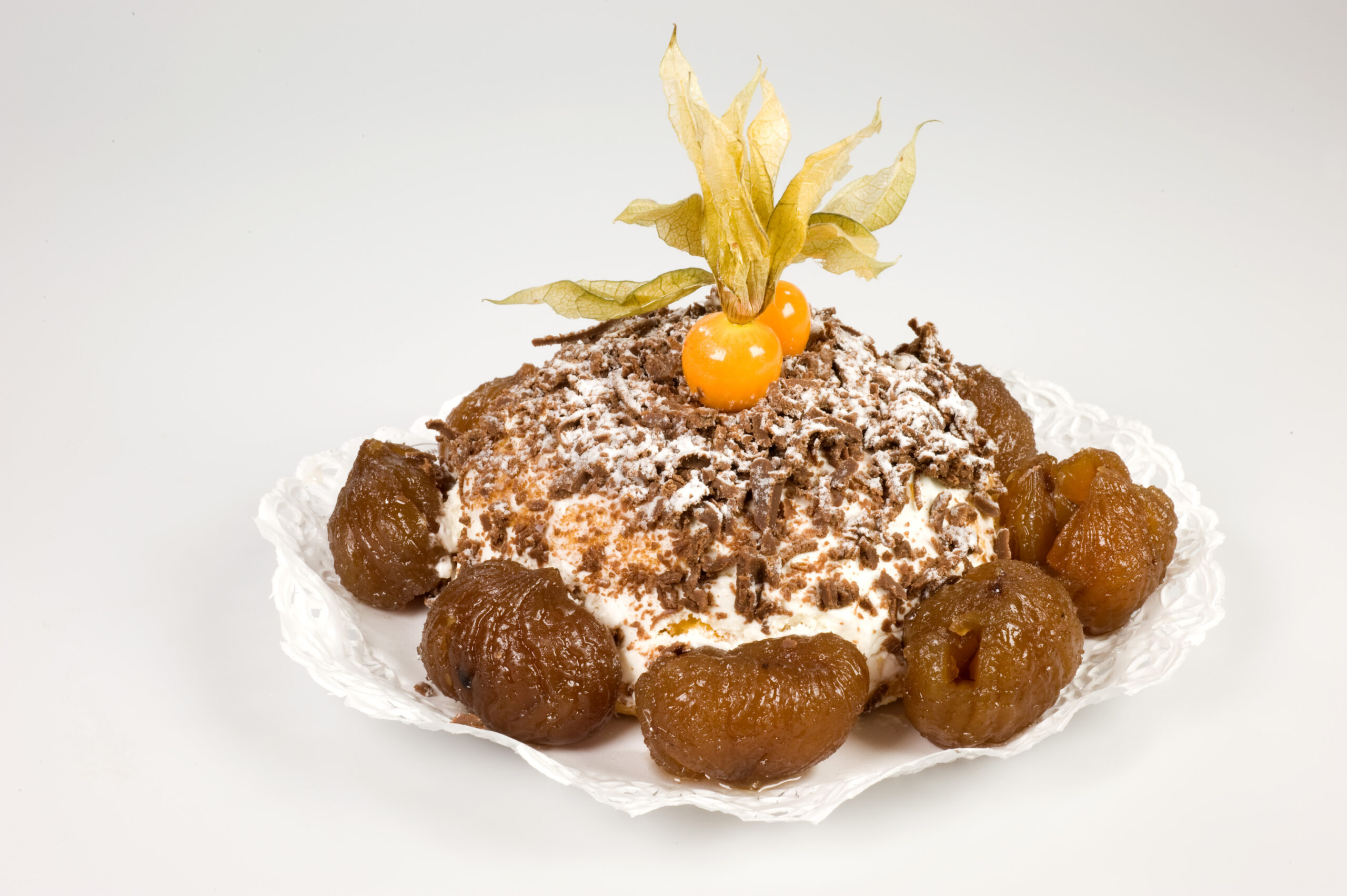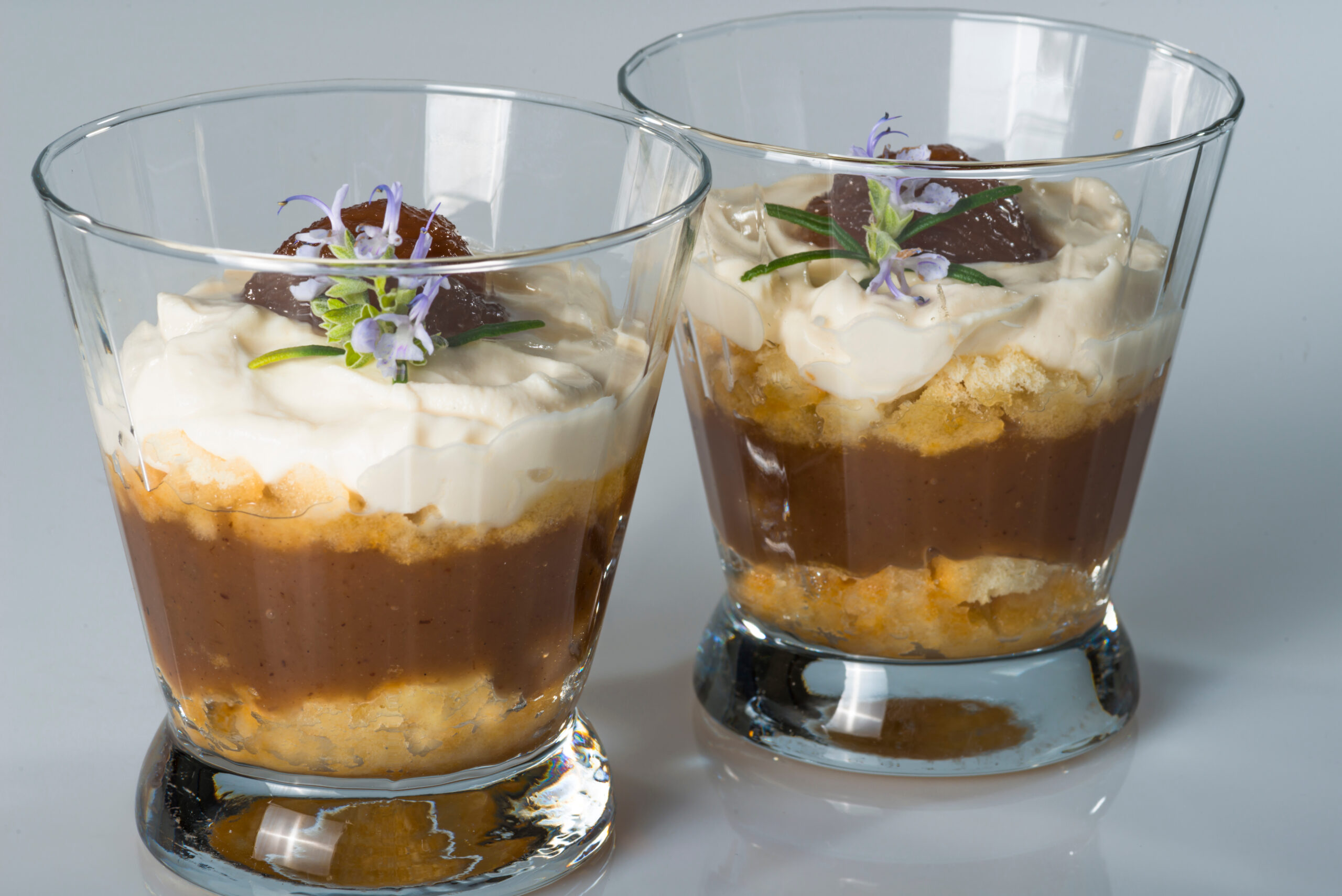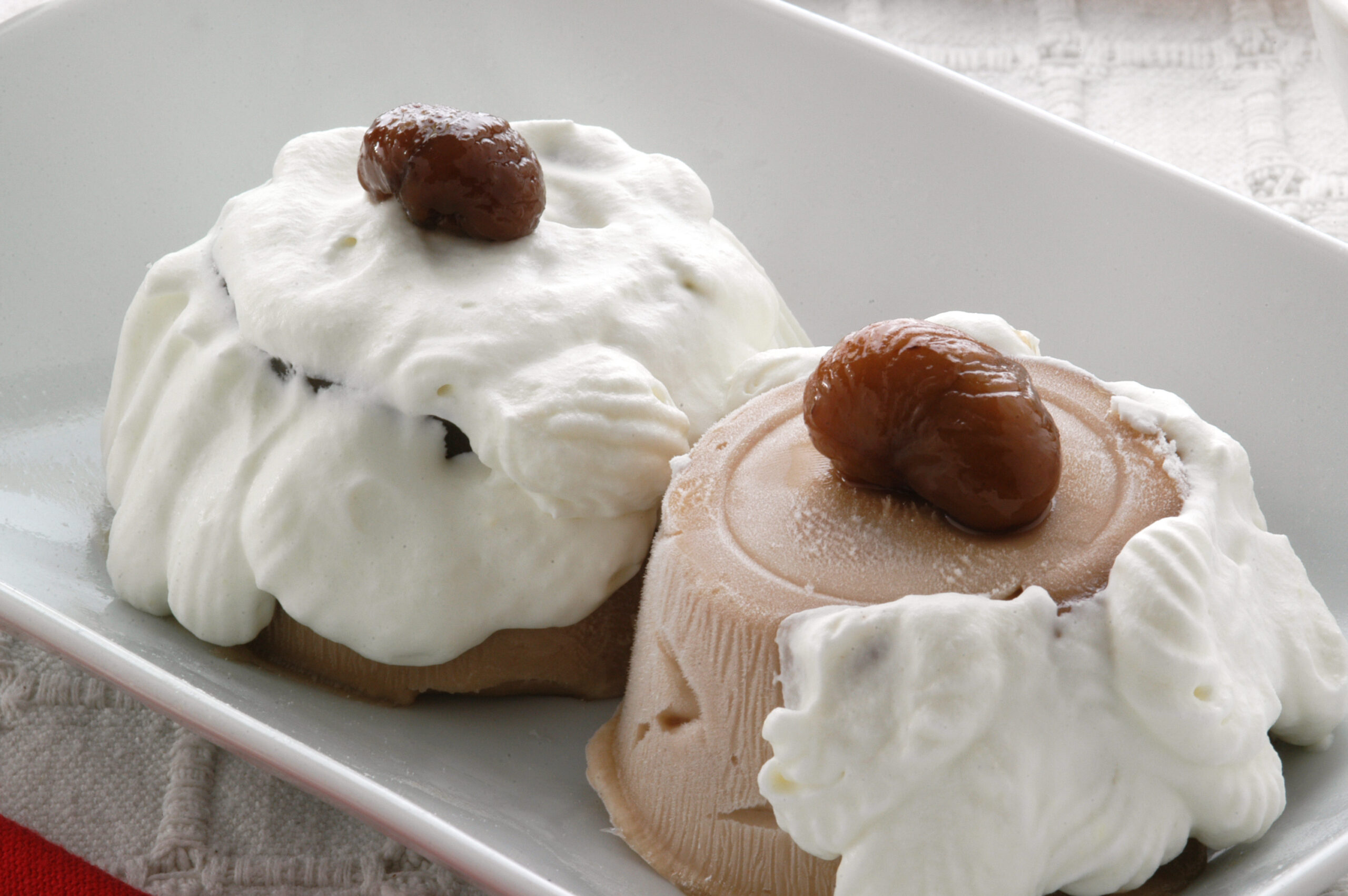EXHIBITION SECTORS
AGRONOMY
The castaniculture in Italy is at the beginning of a new phase of slowing down abandonment, recovery of traditional chestnut groves and new fruiting plantings.
As a whole, therefore, a growth of production is taking place, driven by the demand for valuable productions, first and foremost those of Italian chestnut growers.
From this starting point, by combining the adoption of new management technologies and the multifunctional characteristics of the chestnut grove, economic sustainability, i.e., increased income, is outlined.
Some critical issues are heavy, but by operating in a supply chain logic the improvement processes are more dynamic.
General characteristics
-
Main species: Castanea sativa (European chestnut).
-
Longevity: Long-lived plant, can exceed 500 years.
-
Bearing: Tree up to 30 m tall, with broad crown.
-
Roots: Expansive and deep root system (sensitive to stagnation).
Pedoclimatic needs
-
Climate: Temperate-humid, with cool summers and not too harsh winters.
-
Altitude: Optimal between 300 and 1000 m above sea level, variable according to latitude.
-
Soil:
-
Well drained.
-
Tendentially acidic (pH 5-6.5).
-
Avoid chalky and compact soils (risk of ferric chlorosis and root rot).
-
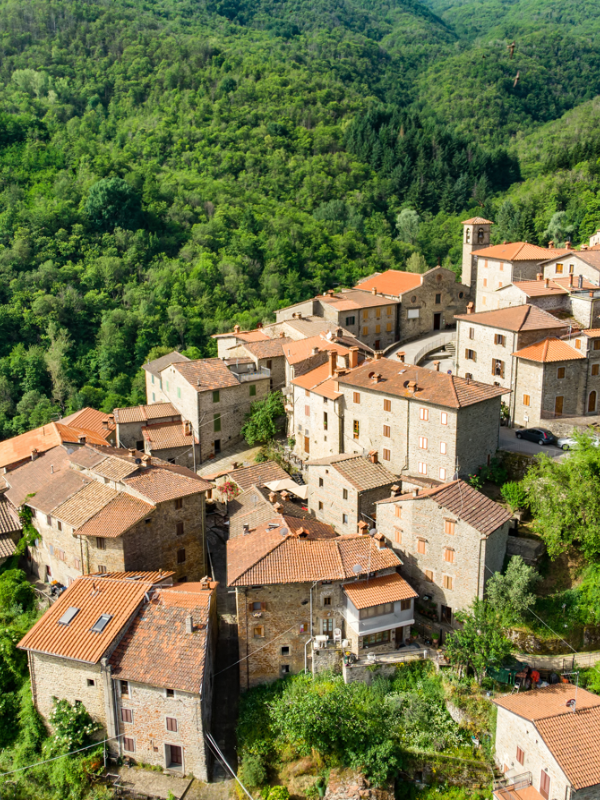
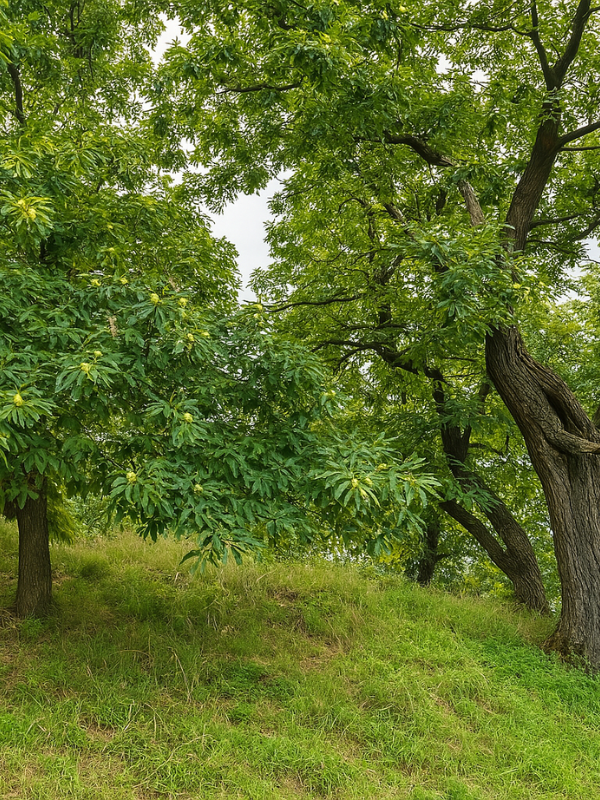
Vegetative cycle
-
Flowering: Between May and July (male and female flowers on the same plant - monoecious species).
-
Pollination: Anemophilous and partly entomophilous. Self-sterile → needs compatible pollinators.
-
Fruiting: Chestnuts ripen between late September and early November.
Crop types
- Fruit chestnut forest: For production of chestnuts and marroni (prized, PGI/DOP).
-
Wood chestnut forest: For production of lumber and poles.
-
Natural or coppice forestry: With periodic cuts, especially in central Italy.
Cultivation Techniques
- Planting: Often on wild (European chestnut or Euro-Japanese hybrid).
- Planting: Of breeding and production; development is controlled and fruiting is stimulated.
- Fertilization: Phosphorus and potassium especially in the early years. Well-matured manure is ideal.
- Weed control: Manual or mechanical mowing.
Main adversities
- Inkiller's disease (Phytophthora cambivora and cinnamomas): affects roots.
- Cortical cancer (Cryphonectria parasitica): attacks the bark and branches.
- Cinipid gall (Dryocosmus kuriphilus): cinipid insect, drastically reduces fruiting.
- Wood decay, post-harvest mold, rodents and birds.
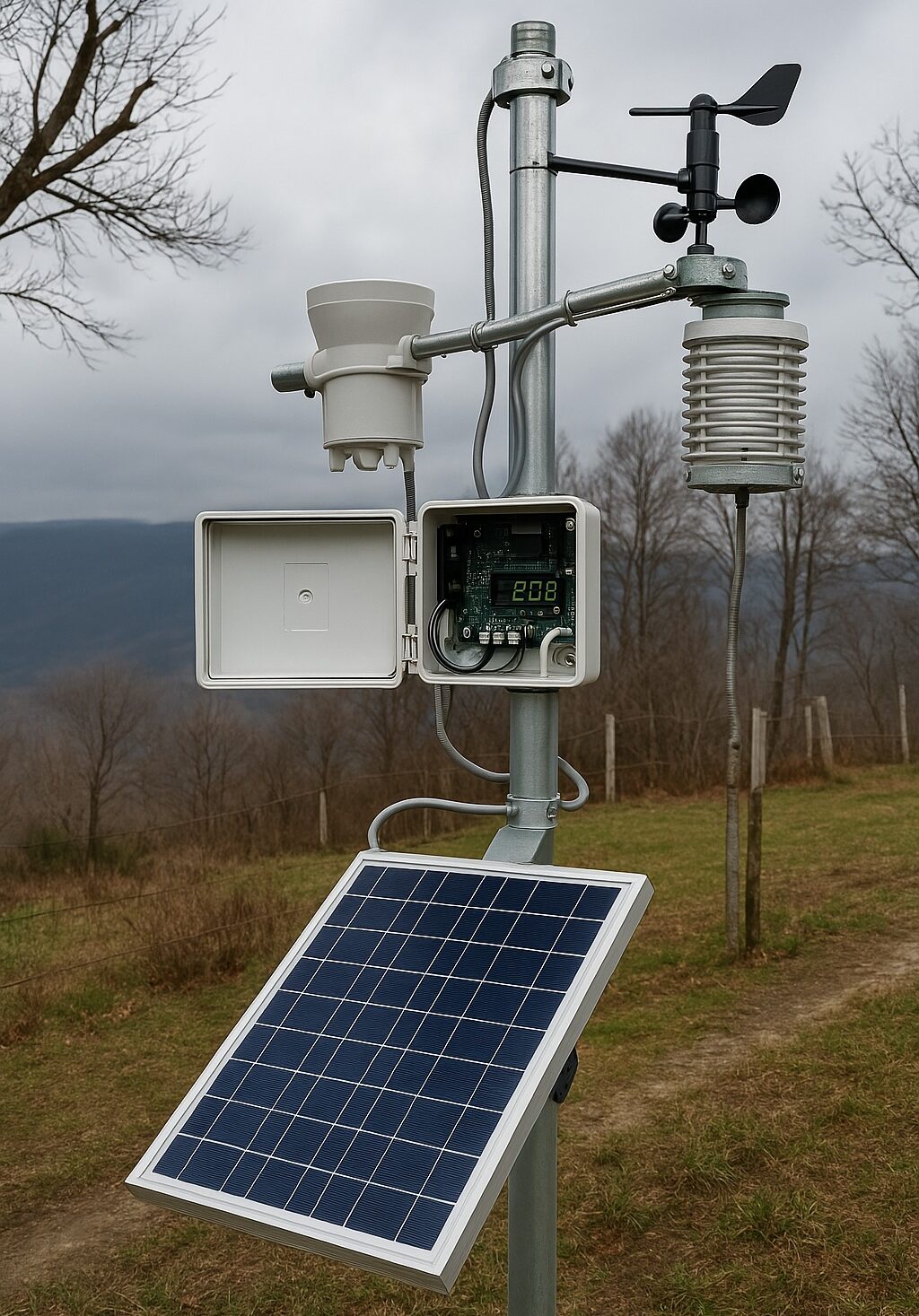
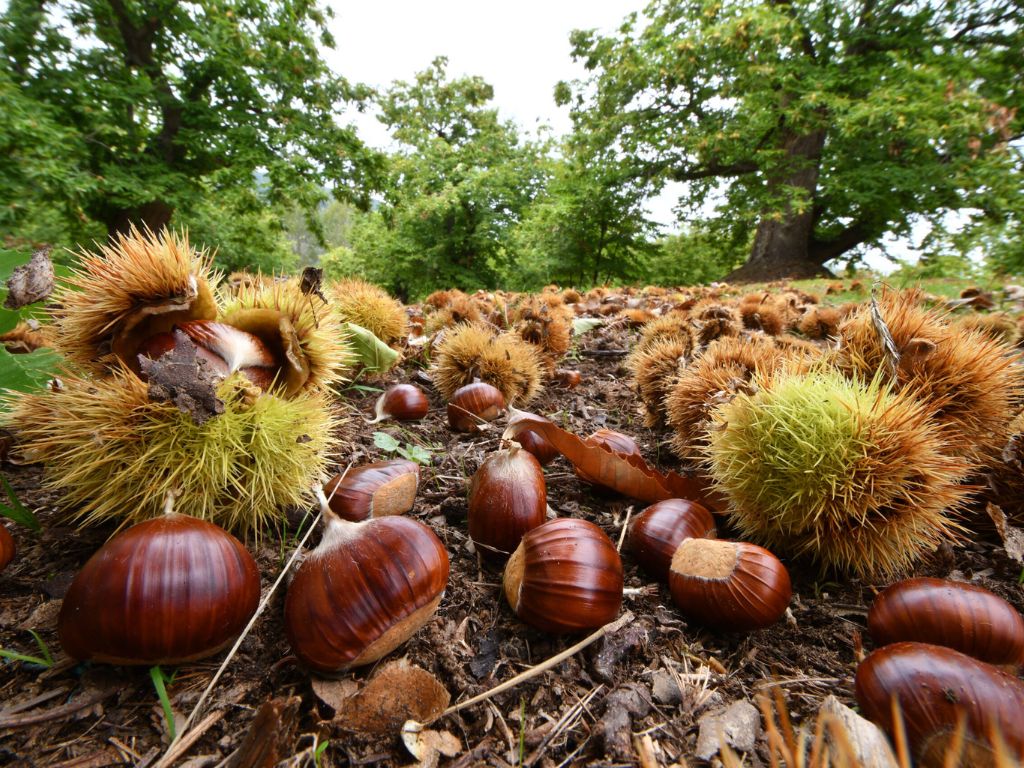
Production and harvesting
- Period: October-early November.
- Method: Manual or mechanized (shaking or picking from the ground).
- Postharvest: Care in drying, sterilization (against pests), cold storage.
TECHNOLOGY
Pesticide systems, technology for remote control, equipment for managing the chestnut grove, machinery, plants, and then again machinery for preserving and processing the fresh product today are indispensable and available on the market.
Investments in technology allow for greater efficiency and protection of the quality of the final product.
Visit booths displaying technologies that are valid for the entire chestnut supply chain.
Do you want to know more?
SUPPLY
Chestnuts and chestnut (Castanea sativa), in addition to being tasty and versatile, are also a very nutritionally interesting food. Unlike most nuts, they have a nutritional profile more similar to that of cereals.
Nutrient properties and benefits
1. Energy source: Rich in complex carbohydrates (especially starches), they provide slow-release energy, useful in diets for athletes and active people.
2. Naturally gluten-free: Ideal for people with celiac disease: with chestnut flour, you can make gluten-free bread, cakes and pasta.
3. Fiber-rich: They promote intestinal transit, satiate and help control blood sugar.
4. Vitamin C: Unusual for a dried fruit! The vitamin C in fresh chestnuts contributes to the proper functioning of the immune system.
5. Minerals: ahigh content of potassium, phosphorus, magnesium: support muscles, nerves and metabolism.
6. "Good" fats: few but quality, especially unsaturated fatty acids and phytosterols, beneficial to the cardiovascular system.
7. Alkalizing effect: Chestnuts do not acidify the blood like animal protein or refined grains.
🔬 Differences between chestnut and brown
- Brown: fruit of selected varieties, sweeter, with inner film (episperm) easier to remove, used in PDO/PGI products.
-
Chestnut: smaller, with episperm penetrating the cloves → more difficult to peel.
🍽️ Food uses
-
Fresh or roasted
-
Boiled
-
Dried (in “piloncini” or “ballotte”)
-
In flour (for necci, castagnacci, polenta)
-
As desserts (marron glacé, creams, jams)
-
As savory preparations
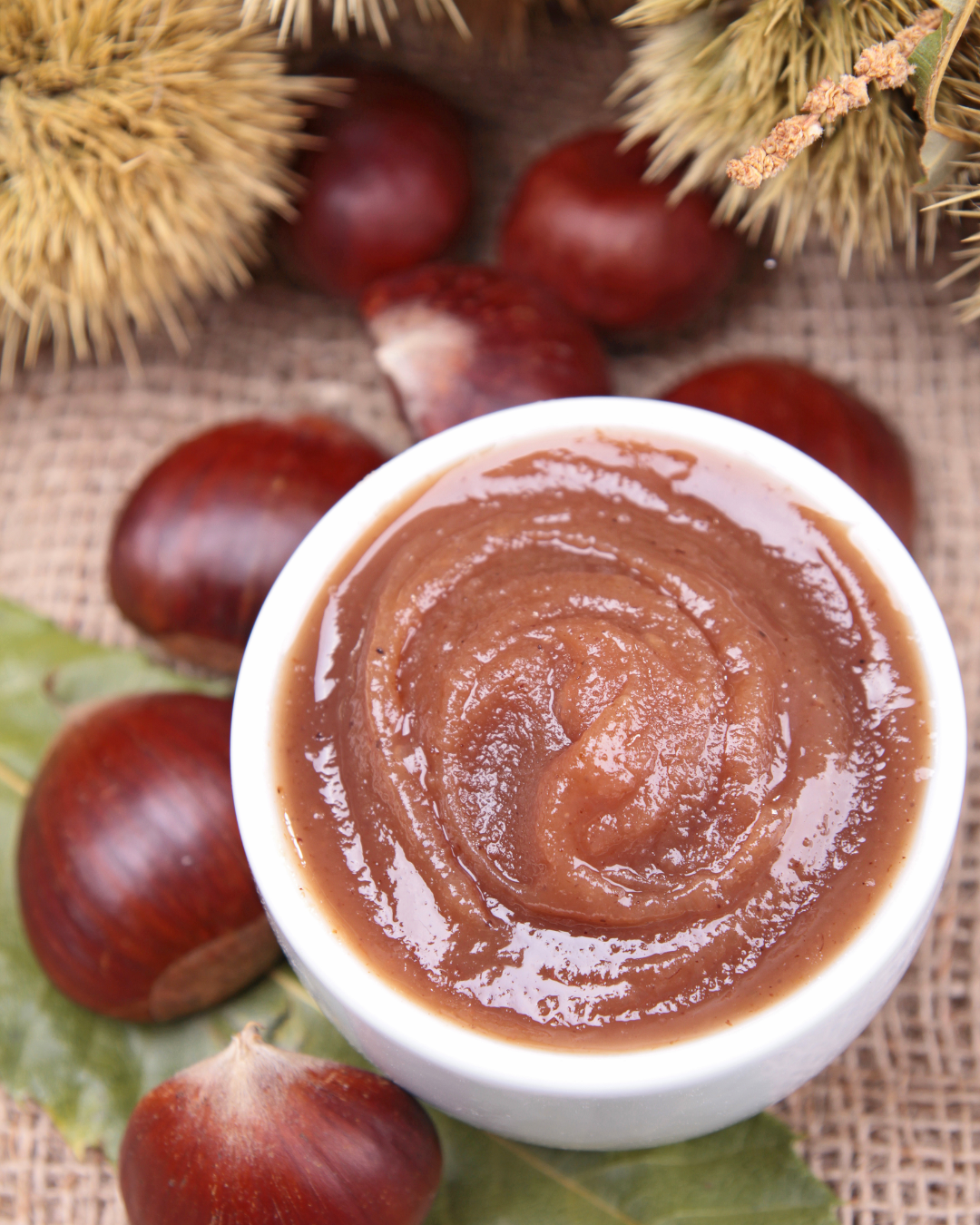
NUTRACEUTICAL
Chestnuts and chestnuts nutraceutical foods. Nutrition occupies a decisive role in our well-being.
However, we often do not “know what we eat,” and the quality of our living is affected.
The term “Nutraceutics” was born from the fusion of the terms “nutrition” and “pharmaceutics,” to refer to the discipline that investigates all components or active ingredients of foods with positive effects on health, prevention and treatment of diseases. Instead of eating and curing yourself, here is how to cure yourself by eating. Nutraceutics has a complex and fundamental task: to clear the field of approximations and approach the subject with the scientificity and rigor it deserves.
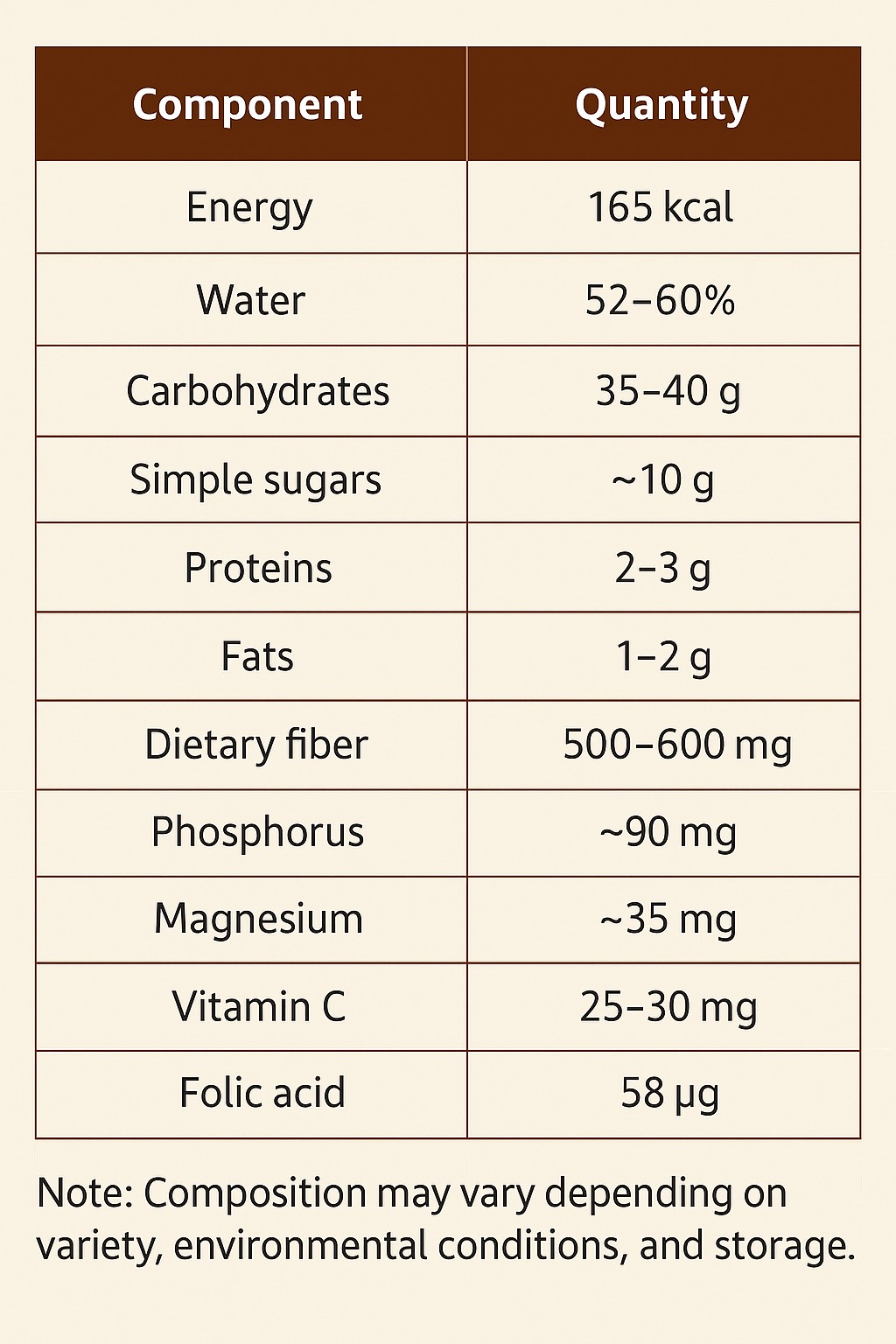
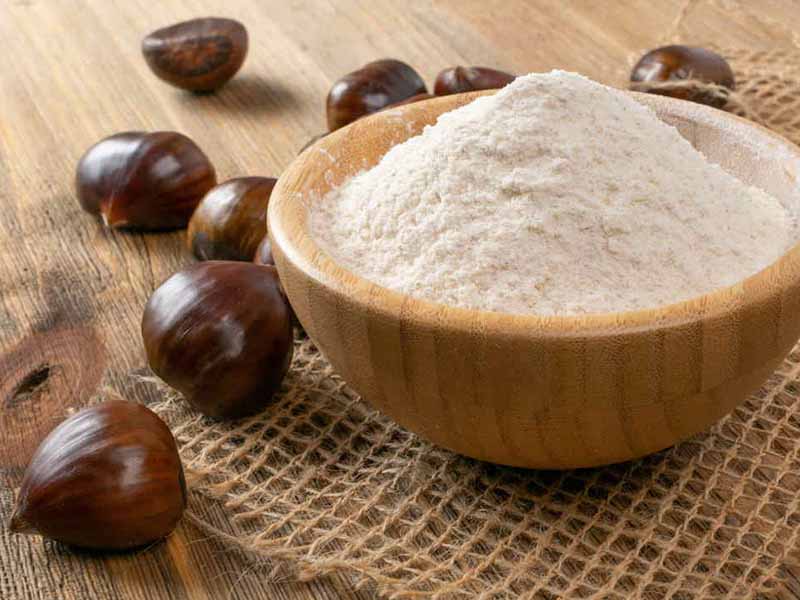
The range of possibilities offered by the consumption of chestnuts, chestnuts and qual flours is very wide: they range from maintaining wellness to preventing cardiovascular and degenerative diseases, they can strengthen the immune system and regulate intestinal functions, or they can help for sports and cosmetic purposes.
Nutraceuticals are now a steadily expanding medical-scientific reality, both in terms of the number and accuracy of scientific studies and the spread of specific products (in the U.S. they turnover more than $250 billion).
TRADE - THE SALES CHANNELS
In Italy, the distribution of chestnuts and marrons occurs through several sales channels. Here is an overview based on available data.
Main sales channels (2020-2021 data)
Large-scale retail trade: about 72% of total sales.
Supermarkets: 42%
Discount: 21%
Hypermarkets: 7%
Superettes and self-service stores:
Traditional channels (local markets, greengrocers): about 11% of sales.
Other channels:
Fairs, festivals and street food: share not quantified, but significant, especially during the autumn season.
Ho.Re.Ca. sector (cafes, restaurants, pastry shops): unspecified share, but relevant for the use of chestnuts and marrons in culinary preparations.
Food industry (production of flours, sweets, snacks): unspecified share, but important for the processing of the product.
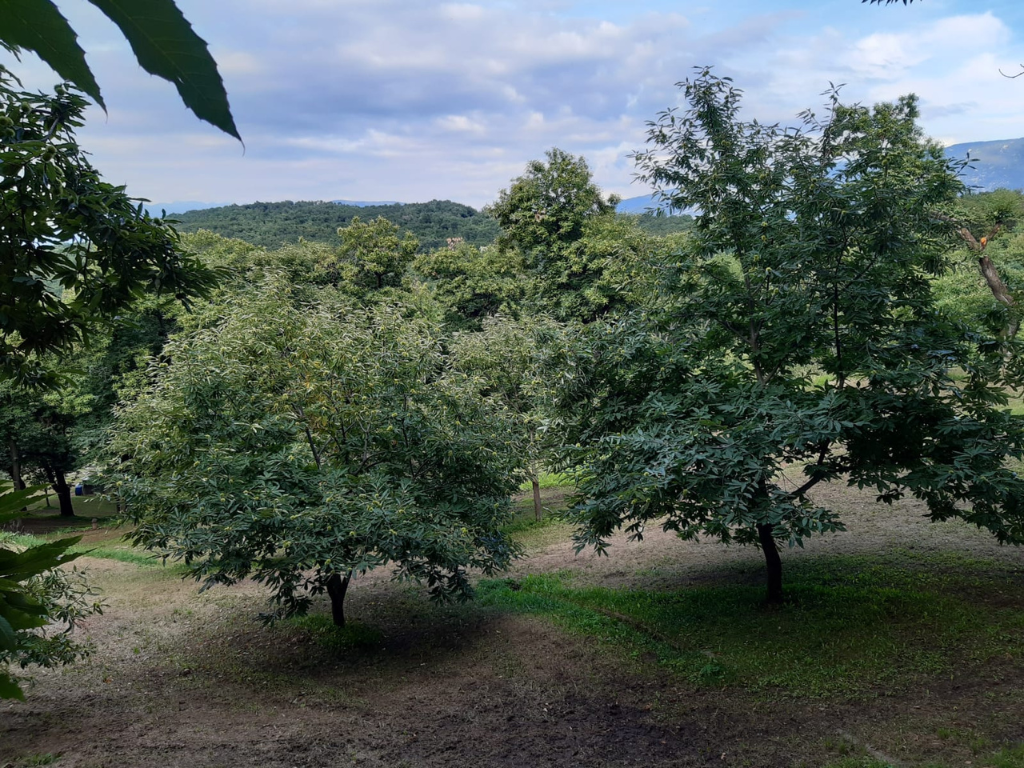
Recent trends
In recent years, there has been an increase in sales through large-scale distribution, with a significant growth in discount stores.
The consumption of chestnuts and marrons is highly seasonal, concentrated in the months of October, November and December.
The production of organic chestnuts and marrons represents about 12% of the total.
These data highlight the importance of large-scale distribution in the distribution of chestnuts and marrons in Italy, while maintaining a significant role for traditional channels and direct sales, especially for higher quality products.
SLOW TOURISM, REGENERATION, EXPERIENCES "THE CIVILIZATION OF THE CHESTNUT"
Slow tourism in chestnut groves is a form of sustainable, experiential and cultural tourism that is increasingly developing in many Italian areas. It is practiced more and more in all seasons, especially in autumn. It is perfect for those looking for nature, traditions, good food and slow rhythms.
What is slow tourism in chestnut groves?
It is an immersive experience that revolves around the chestnut tree and its fruits, the marrons and chestnuts, enhancing:
- the rural and mountain landscape,
- the ancient chestnut woods,
- local traditions,
- seasonal gastronomy,
- and the rituals of the harvest.
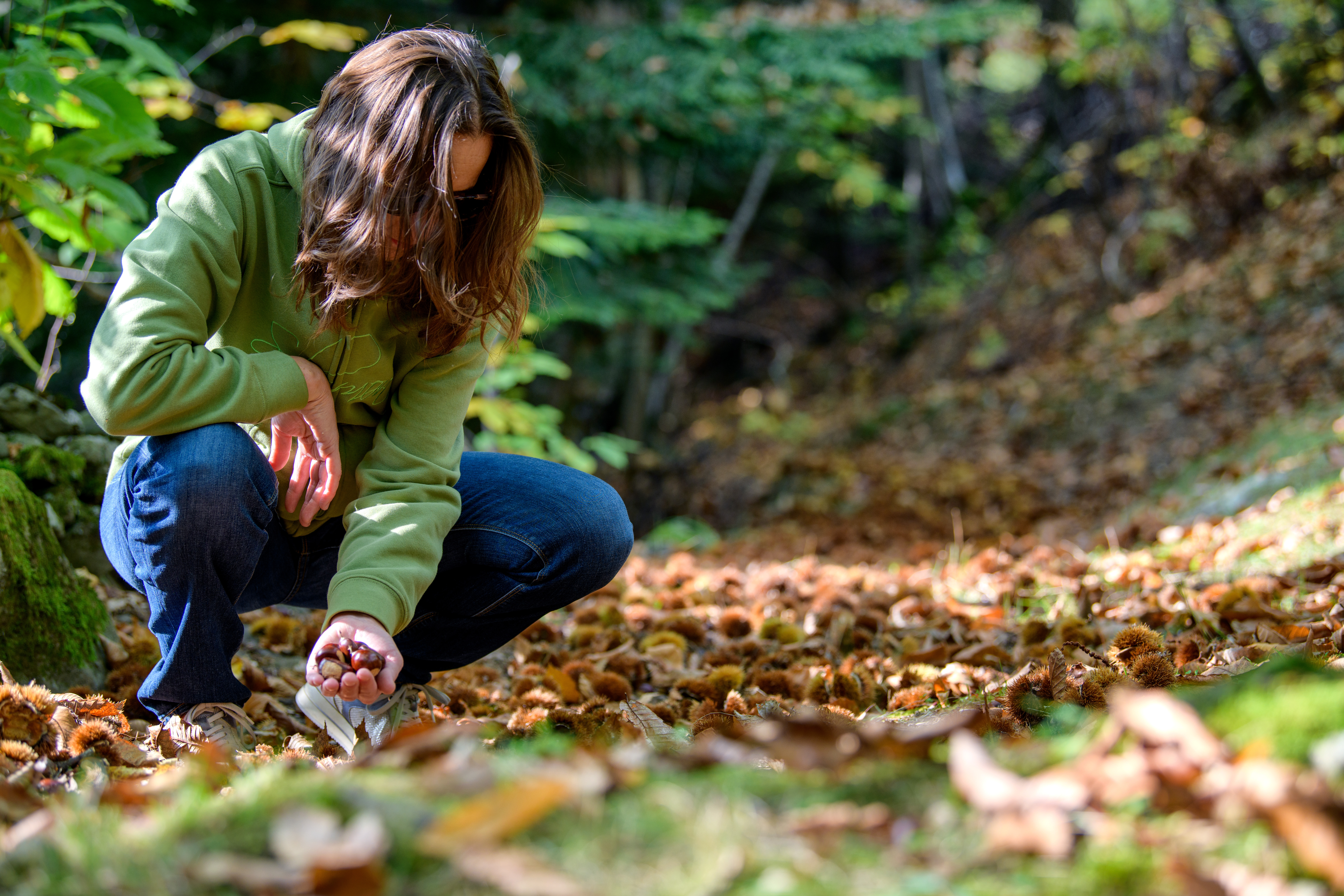
Typical activities
The VILLAGES in the Apennines and in the mountains, together with the chestnut groves and the woods, are attractive destinations in all seasons: from flowering to foliage.
Chestnut harvest
-
"Going for chestnuts" is the most common activity. It is organized by farms, agritourisms or local authorities between September and November.
-
Walks and trekking in the chestnut groves: visitors collect chestnuts in centuries-old woods, often guided by local chestnut growers.
-
Itineraries marked within historic woods (e.g. monumental chestnut groves) with botanical tables, legends, relaxation areas.
-
Activities suitable for families, photographers naturalists, lovers of autumn foliage.


Tastings and picnics in the woods
-
Breads and sweets made with chestnut flour, typical cured meats and cheeses, roasted chestnuts with new wine.
-
Cooking experience and showcooking with local chefs.
Educational and ethnobotanical workshops
-
For adults and schools: flour processing, construction of dryers ("metati"), recognition of native varieties.
-
Chestnut festivals and celebrations: many villages celebrate the chestnut with historical re-enactments, craft markets, folklore, shows and popular music.
FLAVORS
The chestnuts, marron chestnuts and chestnut flour are traditional and versatile ingredients, protagonists of autumn and winter cuisine, especially in the Italian mountain and Apennine areas. Today, these ingredients are also the protagonists in gourmet dishes. Here is a selection of savory recipes that are tasty and rich in history.
What you should know about chestnuts in the kitchen
-
Chestnuts, larger and sweeter, are ideal for "pure" recipes.
-
Chestnut flour has a naturally sweet flavor and is often used for savory dishes, especially in traditional "cucina povera" (literally, poor cuisine, but actually a term of affection for rustic food).
-
They go well with cheeses, smoked or wild meats, seasonal vegetables, mushrooms and onions.
Savory recipes with chestnuts and marrons
1. Chestnut and porcini mushroom soup
-
Ingredients: Boiled or roasted chestnuts, porcini mushrooms, potatoes, onion, rosemary, vegetable broth.
-
Description: Hearty mountain dish, ideal on cold days. The chestnuts add sweetness, the mushrooms add depth.
2. Pumpkin and chestnut soup
-
Ingredients: Cooked chestnuts, pumpkin, leek or onion, broth, vegetable or milk cream.
-
Description: Sweet and savory cream, excellent with croutons and a drizzle of raw EVO oil.
3. Risotto with chestnuts and pancetta
-
Ingredients: Carnaroli rice, boiled and crumbled chestnuts, smoked bacon, broth, Parmesan cheese.
-
Description: A creative recipe where the sweetness of chestnuts is combined with the savory taste of bacon.
4. Chestnut flour polenta (or "pattona")
-
Ingredients: Chestnut flour, water, salt. Optional: addition of bacon or ricotta.
-
Description: Typical dish of the Apennines, it can accompany aged cheeses or sausages.
5. Chestnut gnocchi
-
Ingredients: chestnut flour, potatoes, eggs, salt.
-
Seasoning: Butter and sage, or wild boar ragout or mushrooms.
-
Description: Rustic gnocchi with a delicate but strong taste.
6. Salted pancakes of chestnut flour
- Ingredients: Chestnut flour, water, rosemary, salt, oil.
- Description: Savory version of the classic "pancakes", to be served as an appetizer or snack
7. Chestnuts with sausage
-
Ingredients: Boiled chestnuts, sausage, onion, red wine, bay.
-
Description: Farmer’s dish, very nutritious, ideal as a second or single course.
8. Savoury cake with chestnuts and cheese
-
Ingredients: Pasta brisée, cooked chestnuts in pieces, cheese (e.g. taleggio or fontina), eggs.
-
Description: Modern recipe for buffet and gourmet aperitifs.
Sweet recipes with chestnuts and browns
1. Mont Blanc
Origin: Piedmont/France
Ingredients: Boiled chestnuts, sugar, milk, whipped cream, bitter cocoa
Description: Sweet with an elegant spoon. The chestnuts are pureed, sweetened and arranged in a mountain. Topped by whipped cream to simulate snow.
2. Chestnut cake
Origin: Tuscany, Liguria, Emilia
Ingredients: chestnut flour, water, EVO oil, pine nuts, raisins, rosemary, salt
Description: Sweet poor and compact, without sugar. Traditionally cooked in low pan and served sliced. Vegan and gluten-free!
3. Chestnut and chocolate cake
Ingredients: chestnut flour, eggs, sugar, butter, dark chocolate, yeast
Description: Soft cake, full and strong taste. The combination of chocolate and chestnut is a delicious classic.
4. Chestnut flour panna cotta
Ingredients: Fresh cream, milk, chestnut flour, sugar, jelly
Description: Original variant of the classic panna cotta, with a sweet and aromatic taste.
5. Biscuits with chestnut flour
Ingredients: chestnut flour, rice flour, sugar, butter, eggs, yeast
Description: Rustic and fragrant biscuits, excellent with a black tea or an autumn herbal tea.
6. Chestnut cream
Ingredients: Boiled chestnuts, sugar, vanilla, milk
Description: A sweet cream spread, used for pies, cakes or simply on toasted bread.
7. Chestnut and chocolate mousse
Ingredients: cooked chestnuts, dark chocolate, cream, sugar
Description: Velvety and delicious mousse, excellent served in glasses with cream or granella topping.
8. Chestnut flour muffin
Ingredients: chestnut flour, eggs, sugar, yogurt, yeast, oil
Description: Soft and delicate, ideal for breakfast or snack.
MOUNTAIN MUNICIPALITIES
In Italy, the mountain municipalities are 2,487, or 31.5% of all Italian municipalities. All the municipalities of Valle d'Aosta and Trentino-Alto Adige are considered to be mountainous, while in other regions the percentage varies.
Chestnut growing is widespread in the mountain municipalities and for centuries the mountain man has practiced it for survival generating identifying ecotypes of the territories of origin.
Today, chestnut growing can be a source of income; the recovery of chestnut groves and new plantings help to counteract the abandonment of inland areas.
The multifunctionality of chestnut growing in mountain areas generates short supply chains, identity food products and slow tourism offer.
